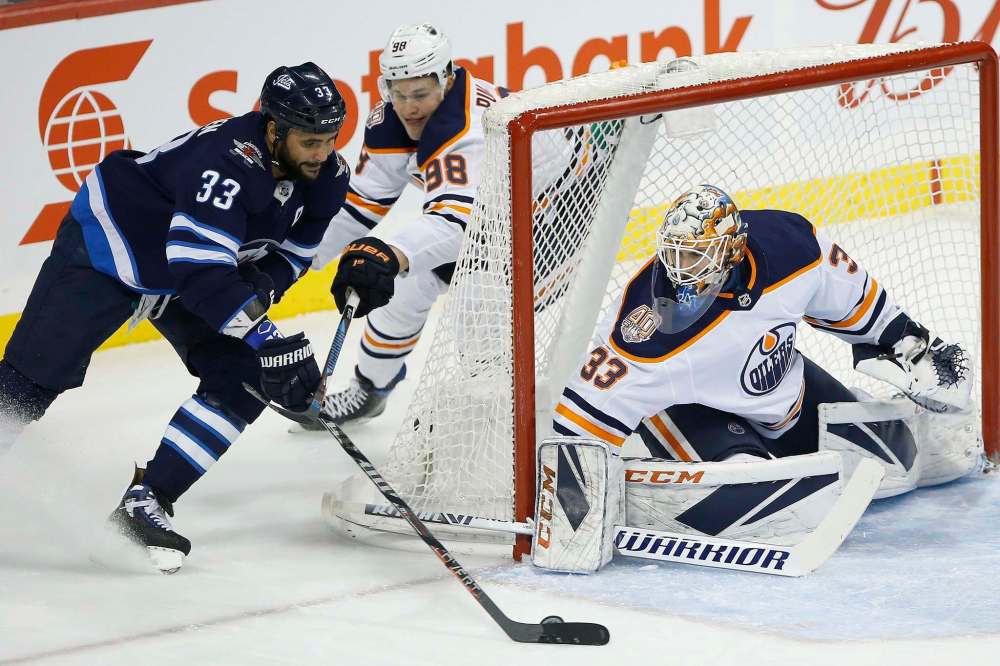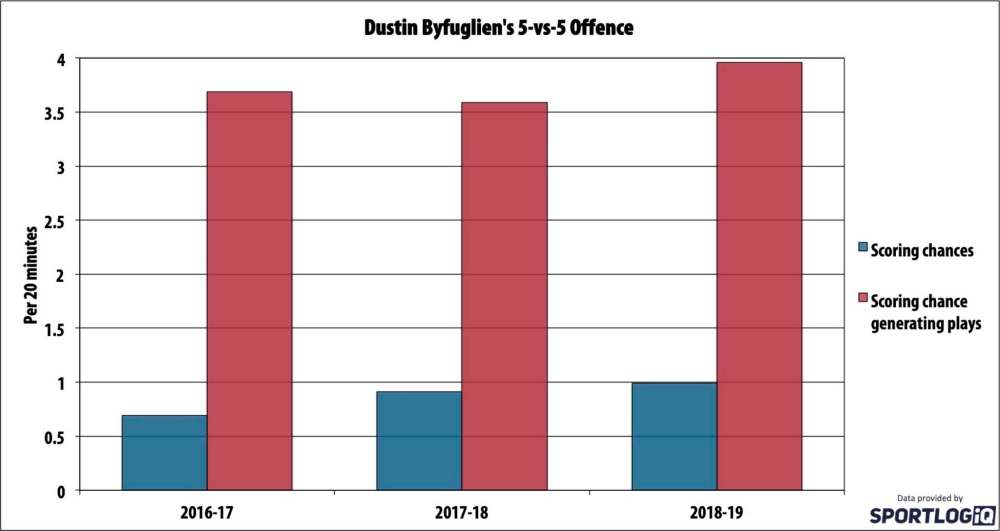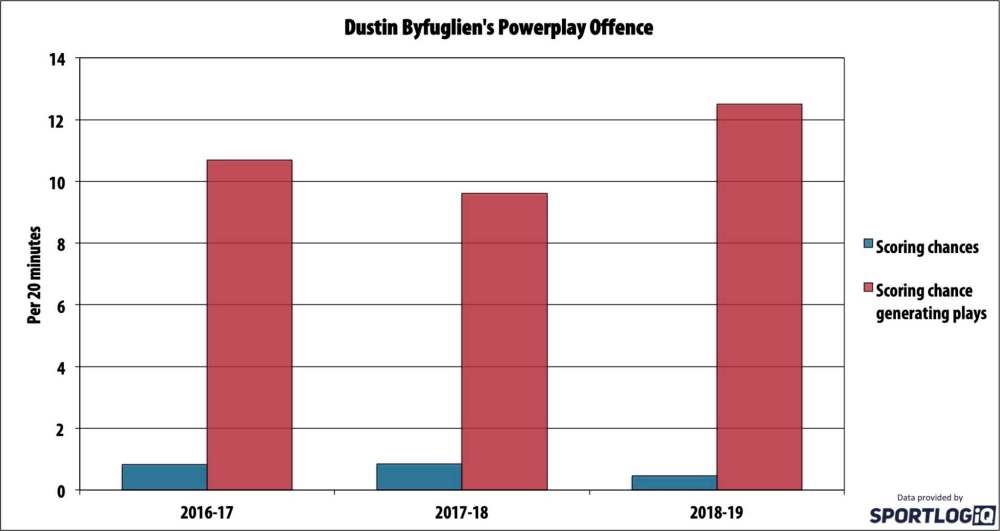Powerhouse package
Byfuglien has 23 points in 25 games despite reduced ice time this season
Advertisement
Read this article for free:
or
Already have an account? Log in here »
To continue reading, please subscribe:
Monthly Digital Subscription
$1 per week for 24 weeks*
- Enjoy unlimited reading on winnipegfreepress.com
- Read the E-Edition, our digital replica newspaper
- Access News Break, our award-winning app
- Play interactive puzzles
*Billed as $4.00 plus GST every four weeks. After 24 weeks, price increases to the regular rate of $19.00 plus GST every four weeks. Offer available to new and qualified returning subscribers only. Cancel any time.
Monthly Digital Subscription
$4.75/week*
- Enjoy unlimited reading on winnipegfreepress.com
- Read the E-Edition, our digital replica newspaper
- Access News Break, our award-winning app
- Play interactive puzzles
*Billed as $19 plus GST every four weeks. Cancel any time.
To continue reading, please subscribe:
Add Free Press access to your Brandon Sun subscription for only an additional
$1 for the first 4 weeks*
*Your next subscription payment will increase by $1.00 and you will be charged $16.99 plus GST for four weeks. After four weeks, your payment will increase to $23.99 plus GST every four weeks.
Read unlimited articles for free today:
or
Already have an account? Log in here »
Hey there, time traveller!
This article was published 14/12/2018 (2513 days ago), so information in it may no longer be current.
For the first time since 2015-16, Dustin Byfuglien is playing under 20 minutes per game at even strength, down to just 19 with the ascension of the pairing of Jacob Trouba and Josh Morrissey eating up more heavy minutes.
The result has been that Byfuglien has played about the same amount per game as last season, with more time on special teams. So far the change seems to be agreeing with him, as he’s already racked up 14 power-play points, just eight fewer than he had in 69 games last season, and the same total he had in 80 games in 2016-17.
Byfuglien has 23 points in 25 games, which puts him on pace for the best offensive season of his career, remarkable for a player who is 33 years old. While the league is trending towards more offensive play, for the most part that is coming from defencemen being more involved in the offence, playing more supportive roles in helping forwards create more plays down low.

Byfuglien is a different kind of defenceman, willing to aggressively pinch and overwhelm opposing defences on the forecheck with his size, strength and skill.
What sets him apart from his peers is the aggressive nature of his play. He almost plays like a forward at times, and while the involvement of defencemen in scoring chances has gone down over time, that has been true for Byfuglien in his early 30s.
At an age where most defencemen would be seeing some level of offensive decline, especially at even strength, Byfuglien’s offensive involvement has increased this year, albeit slightly.
What’s interesting is that Byfuglien doesn’t just create a lot of scoring chances for his teammates, leading the Jets’ defensive group each of the last three seasons there, but he also gets a fair amount of scoring chances himself.
Defencemen rarely shoot from the slot at even strength, and so far this season, only five defencemen have shot from the slot at five-on-five more often than Byfuglien: Dougie Hamilton, Victor Hedman, Zach Werenski, Trevor Daley and Roman Josi. Outside of Daley, that’s an elite group of offensive defencemen, and when you cut things down to scoring chances that get on net, no defenceman in the league has more than Byfuglien’s 0.81 per 20 minutes.
Knowing that he’s a scoring threat on his own at even strength, you might expect Byfuglien to pinch a lot on the power play, but his play changes significantly.

On the power play, Byfuglien is shooting from the slot a little more than half as often as the previous two seasons, and the result has been that the Jets are producing far more scoring chances while he’s on the ice than ever before.
Power plays are revolving around point shots less than ever before, and with the puck-moving talent the Jets have down low, and the shot options they have at forward between Patrik Laine, Mark Scheifele and Kyle Connor, it’s clear that Byfuglien is playing smart, being a support player that keeps the puck going where it needs to in order to generate high-quality chances.
At even strength, Byfuglien’s aggressive pinches can create man-advantage situations and results in more offence, but on the power play the man advantage already exists down low. Byfuglien knows that and he plays differently. That’s the sign of an intelligent hockey player.
Less ice time at even strength has also allowed Byfuglien to improve his defensive play, with the Jets allowing fewer high-danger scoring chances and passes to the slot against while he’s on the ice than any other defenceman on the roster, despite the fact he isn’t getting easy minutes by any stretch of the imagination.
Unsurprisingly, the combined impact he exerts on the game offensively and defensively has resulted in him sporting the best high-danger scoring chance, shot and shot-attempt differentials of any defenceman on the Jets this season, despite the fact he’s only a decent transition player.
This is made even more impressive by the fact he’s done it while playing primarily with Ben Chiarot, who is a decent depth defenceman but not a top-four guy in an ideal world.

The emergence of the MorrisseyTrouba pairing, along with Byfuglien’s continued dominance at both ends of the ice, are why I believe around the NHL trade deadline the Jets could really use a mid-tier puck-moving defenceman for him to play with. If they’re able to acquire one, they will essentially have two top-pairing defensive units, which along with their forward depth, would make them a Herculean foe for any team to face in the post-season.
Andrew Berkshire is a hockey writer specializing in data-driven analysis of the game.






